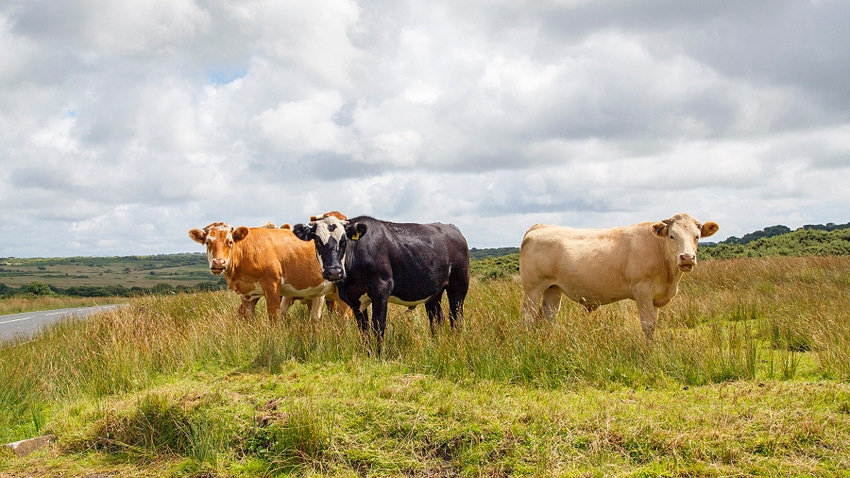July 27, 2023

Small pockets of Missouri pastures may have gone unscathed by 2023 drought. Those lucky enough to have grass should consider stockpiling tall fescue, says University of Missouri Extension state forage specialist Craig Roberts.
Stockpiling is the process of building forage supplies by letting grass go ungrazed until frost. Stockpiled forage can then be grazed by livestock until late winter. The stockpiling process begins in mid-August and takes planning and patience, says Roberts. It also needs the right amount of nitrogen fertilizer and rain.
Stockpiling saves labor, time and money by reducing the need to feed hay throughout the winter. Stockpiling lets producers take cows to the feed instead of the feed to the cows.
A recent study by MU Extension agricultural economist Wesley Tucker shows that stockpiling can save producers considerable money this fall. With current nitrogen prices, Tucker estimates forage producers may be able to stockpile fescue for as little as one-third to one-half the current cost of hay.
“If the weatherman is right and we actually have a decent fall for once, investing in our fescue stands may pay big dividends this year,” says Tucker.
More crude protein
Not only that, but stockpiled tall fescue contains more crude protein and energy than most other options. Roberts says stockpile contains 12.5% crude protein compared to typical-quality tall fescue hay at 7.5% CP. A 2003 study by MU forage specialist Rob Kallenbach and others showed that delaying grazing until late winter reduces ergovaline amounts.
The waxy leaves of tall fescue stay green until mid-October when growth slows. Missouri’s No. 1 forage got to the top spot because of its persistence, resistance to disease and insects and long growing season. On the downside, Kentucky 31 fescue can cause health and production problems in livestock without proper management.
Pure stands of fescue work better for stockpiling than stands with heavy clover mix.
Three steps
Roberts gives the three-step recipe for stockpiling:
1. Reset pastures in late summer by clipping or grazing.
2. Fertilize pastures between Aug. 1 and Aug. 15. Rates vary based on soil type and conditions. The MU Extension news release “Apply fall nitrogen now to boost forage stockpiles” (http://muext.us/n5739) has MU Extension nutrient management specialist John Lory’s recommendations. Because nitrogen increases toxins, Lory recommends nitrogen rates below 60 pounds per acre in order to prevent excessive amounts of toxin in the fall growth. If the pasture is novel-endophyte tall fescue, producers can fertilize at high rates of nitrogen with no risk of toxicity.
The earlier you fertilize in August, the better forage responds. Keep in mind that higher nitrogen rates also increase risk of endophyte problems on Kentucky 31 fields. MU research has found that stockpiled fescue can potentially yield 15-25 pounds of dry matter per pound of nitrogen applied. Remove cows from pastures before applying nitrogen and close the gates until the first hard frost.
3. Defer grazing until the first hard frost – around mid-November in Missouri – to build the stockpile. Delaying grazing after mid-November does not further increase tonnage. Strip graze in small intervals through late March for best utilization.
Roberts gives more details in this MU Integrated Pest Management YouTube video “Fall Forage Stockpiling” at https://youtu.be/oxs8pOFPwg4. Also see “Drought recovery forage options” at http://muext.us/n5751 for a discussion of fertilizer response in the fall.
For more drought resources, go to https://mizzou.us/DroughtResources or visit your local MU Extension agronomy or livestock specialist.
For more information on management of tall fescue, visit the Alliance for Grassland Renewal at https://grasslandrenewal.org.
Source: University of Missouri Extension
You May Also Like




